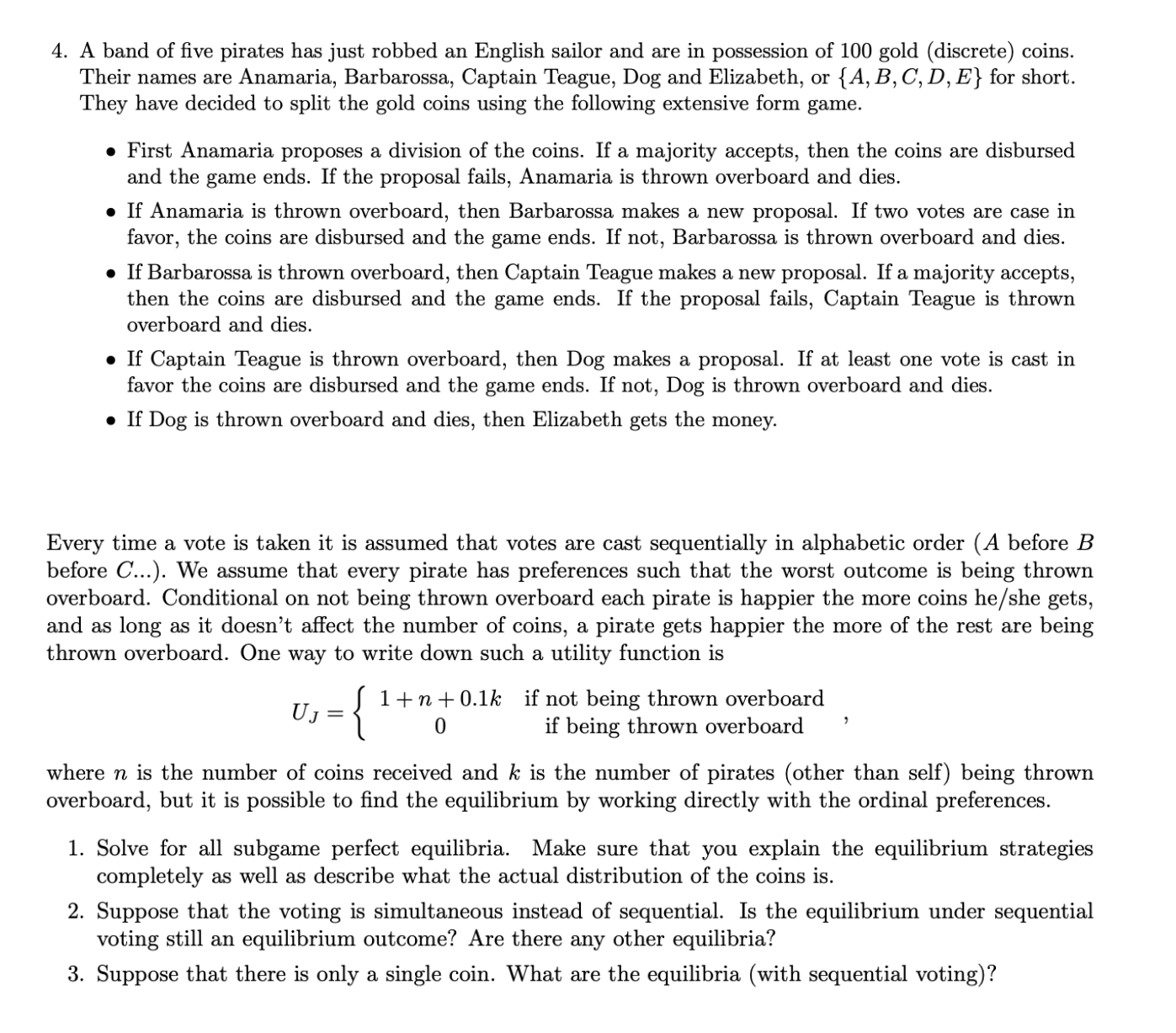4. A band of ve pirates has just robbed an English sailor and are in possession of 100 gold (discrete) coins. Their names are Anamaria, Barbarossa, Captain Teague, Dog and Elizabeth, or {A, B, C, D, E} for short. They have decided to split the gold coins using the following extensive form game. 0 First Anamaria proposes a division of the coins. If a majority accepts, then the coins are disbursed and the game ends. If the proposal fails, Anamaria is thrown overboard and dies. 0 If Anamaria is thrown overboard, then Barbarossa makes a new proposal. If two votes are case in favor, the ooins are disbursed and the game ends. If not, Barbarossa is thrown overboard and dies. 0 If Barbarossa is thrown overboard, then Captain Teague makes a new proposal. If a majority accepts, then the coins are disbursed and the game ends. If the proposal fails, Captain Teague is thrown overboard and dies. 0 If Captain Teague is thrown overboard, then Dog makes a proposal. If at least one vote is cast in favor the coins are disbursed and the game ends. If not, Dog is thrown overboard and dies. 0 If Dog is thrown overboard and dies, then Elizabeth gets the money. Every time a vote is taken it is assumed that votes are cast sequentially in alphabetic order (A before B before 0'...) We assume that every pirate has preferences such that the worst outcome is being thrown overboard. Conditional on not being thrown overboard each pirate is happier the more coins he/she gets, and as long as it doesn't affect the number of coins, a pirate gets happier the more of the rest are being thrown overboard. One way to write down such a utility function is 1 U _ 1 + 'n + 0.1]: if not being thrown overboard J _ 0 if being thrown overboard where n is the number of coins received and k is the number of pirates (other than self) being thrown overboard, but it is possible to nd the equilibrium by working directly with the ordinal preferences. 1. Solve for all subgame perfect equilibria. Make sure that you explain the equilibrium strategies completely as well as describe what the actual distribution of the coins is. 2. Suppose that the voting is simultaneous instead of sequential. Is the equilibrium under sequential voting still an equilibrium outcome? Are there any other equilibria? 3. Suppose that there is only a single coin. What are the equilibria (with sequential voting)







